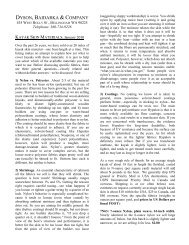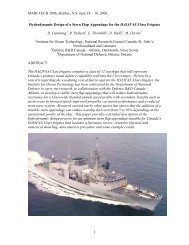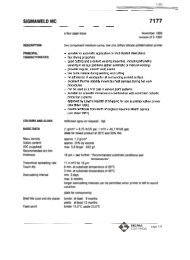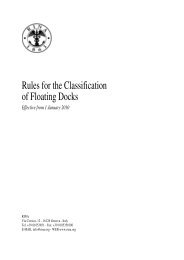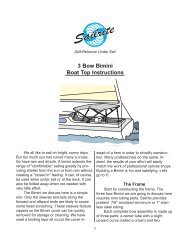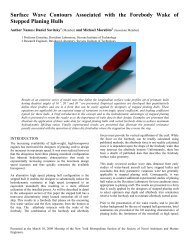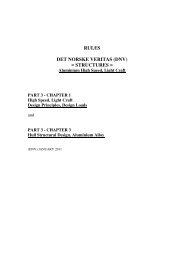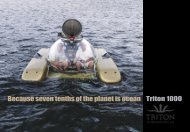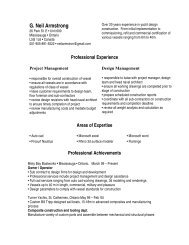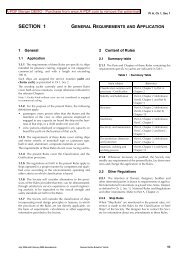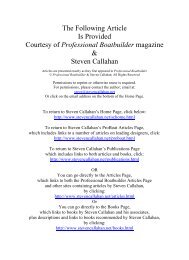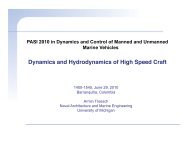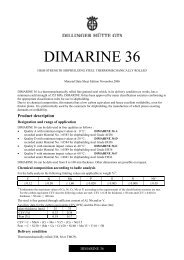Recent Applications of Hydrofoil-Supported- Catamarans - Boat ...
Recent Applications of Hydrofoil-Supported- Catamarans - Boat ...
Recent Applications of Hydrofoil-Supported- Catamarans - Boat ...
Create successful ePaper yourself
Turn your PDF publications into a flip-book with our unique Google optimized e-Paper software.
9tunnel between the demi-hulls gives an ideal situation for a high aspect ratio foil systemallowing a forward foil spanning nearly 11m.After initial calculations a design including a model test was proposed. Halter Marineresponded with stating that they had already a model. The question about the model’ssize was answered with “45m overall length” and meant the 45m E-Cat demonstrator inNew Orleans, USA.The challenge was taken up and a design without model tests was produced and the foilsystem was built by the Halter Marine Shipyard in New Orleans. Seatrials were run inSeptember and October 1999 and proved the predicted enormous resistance reductionwith the E-Cat at 175t load displacement reaching 42 to 44 knots top speed and 46knots at a lighter load. Propulsion is by twin Caterpillar Diesel engines 3516B <strong>of</strong> 2 x1910kW and twin MJP / Bird-Johnson 650 waterjets, see Halter Marine (2000).The E-Cat power ratio with these trial results give a power ratio for the craft withoutfoils <strong>of</strong>e p = 0,140 at FnD = 2,16 ? T= 7,14and with a Hysuwac foil system installede p = 0,103 at FnD = 2,92 ? T= 9,71.This presents the lowest power ratio or highest transport efficiency <strong>of</strong> any comparableferry type hull found in literature and used for the Hysucat data base. It also indicatesthat massive improvement on fast ferries with Semi-Displacement hulls are feasible.Wake tests conducted by Mr. Stumbo <strong>of</strong> Washington State Ferries (WSF) confirmed thelow wash <strong>of</strong> the foil assisted E-Cat observed in earlier model tests on similar hulls, seeStumbo S. (2000).Mr. Stumbo stated that the E-Cat had the lowest wash <strong>of</strong> all the ferries tested in hisprogram, but that the water depth in the lake was relatively low and that shallow watereffects could not be eliminated completely and that a CFD-study will have to clear thesituation and the influence <strong>of</strong> the water depth. Most other wake tests were conductedin deeper water. Usually the wave wake wash is amplified in shallow water.The photograph in Figure 5 shows the foil assisted E-Cat at speed in the seatrials. Thehulls are now running much higher out <strong>of</strong> the water and therefore it will be necessary toextend the Tigres picture along the side hulls well below the waterline.



